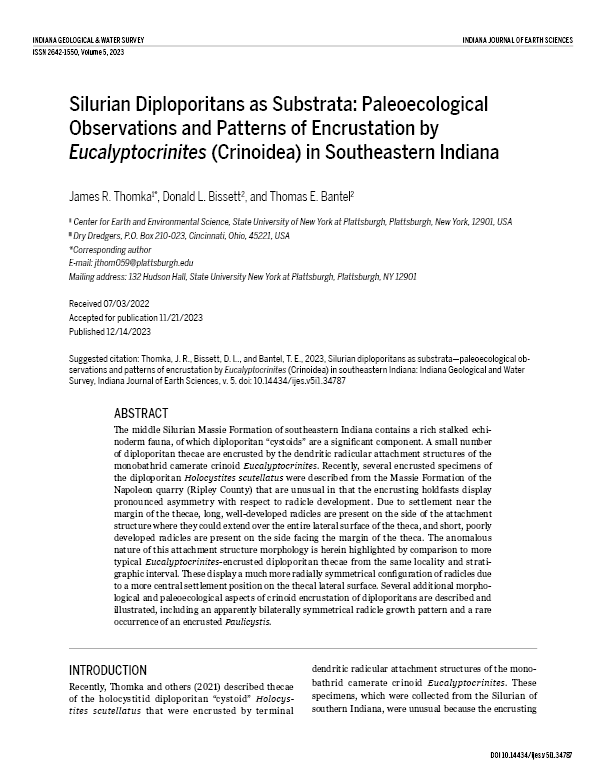Silurian Diploporitans as Substrata: Paleoecological Observations and Patterns of Encrustation by Eucalyptocrinites (Crinoidea) in Southeastern Indiana
Main Article Content
Abstract
The middle Silurian Massie Formation of southeastern Indiana contains a rich stalked echinoderm fauna, of which diploporitan “cystoids” are a significant component. A small number of diploporitan thecae are encrusted by the dendritic radicular attachment structures of the monobathrid camerate crinoid Eucalyptocrinites. Recently, several encrusted specimens of the diploporitan Holocystites scutellatus were described from the Massie Formation of the Napoleon quarry (Ripley County) that are unusual in that the encrusting holdfasts display pronounced asymmetry with respect to radicle development. Due to settlement near the margin of the thecae, long, well-developed radicles are present on the side of the attachment structure where they could extend over the entire lateral surface of the theca, and short, poorly developed radicles are present on the side facing the margin of the theca. The anomalous nature of this attachment structure morphology is herein highlighted by comparison to more typical Eucalyptocrinites-encrusted diploporitan thecae from the same locality and stratigraphic interval. These display a much more radially symmetrical configuration of radicles due to a more central settlement position on the thecal lateral surface. Several additional morphological and paleoecological aspects of crinoid encrustation of diploporitans are described and illustrated, including an apparently bilaterally symmetrical radicle growth pattern and a rare occurrence of an encrusted Paulicystis.
Downloads
Article Details
All content for Indiana Journal of Earth Sciences is licensed under a Creative Commons Attribution-NonCommercial 4.0 International License (CC BY-NC 4.0; http://creativecommons.org/licenses/by-nc/4.0/), wherein the author retains copyright. As a service to the research community and as an outlet of its public mission, the IGWS commitment to true open access to scholarly information extends to authors, thus the Indiana Journal of Earth Sciences content is archived at the IGWS and the IU Open Scholar Works Archive.
